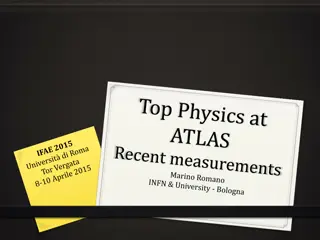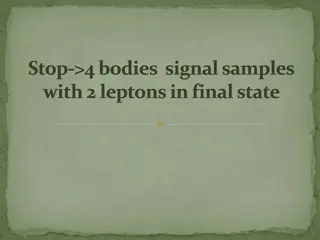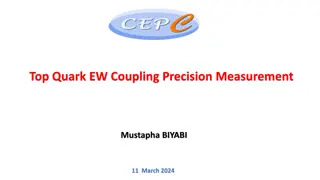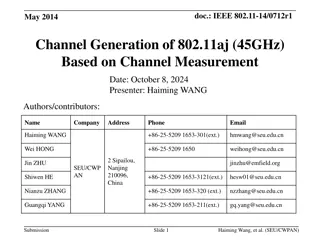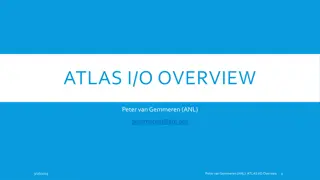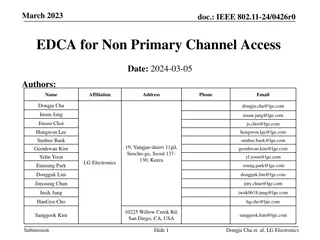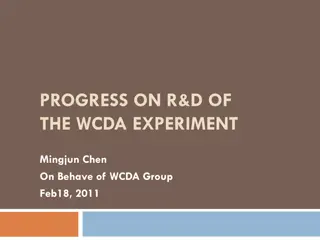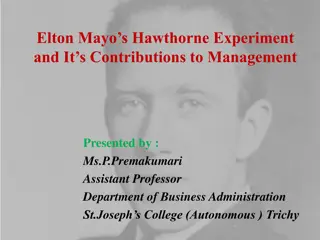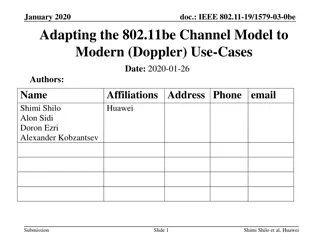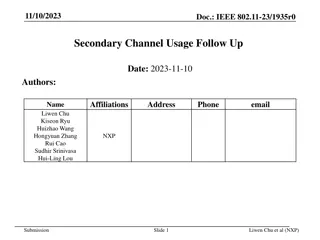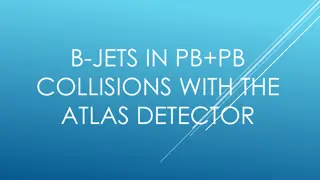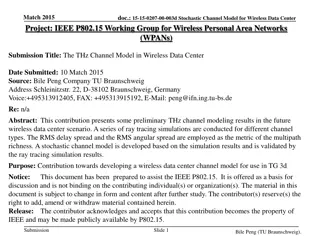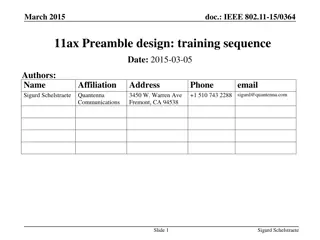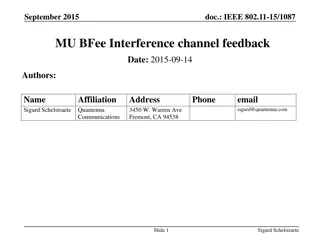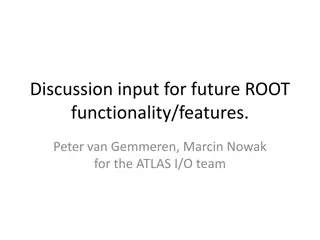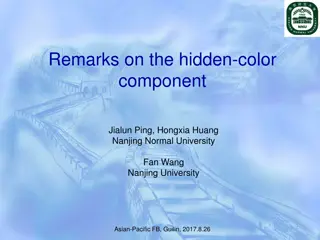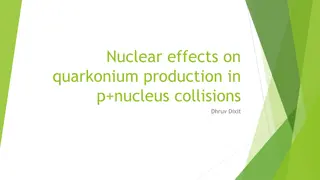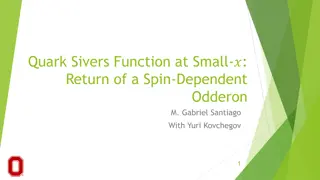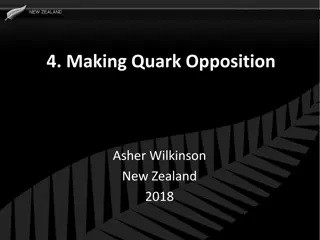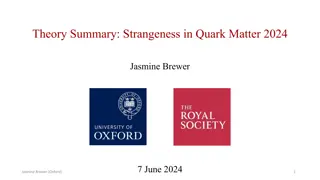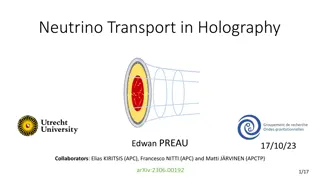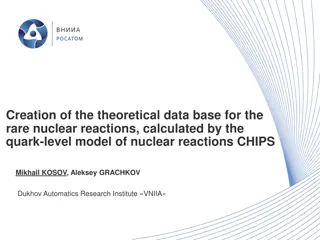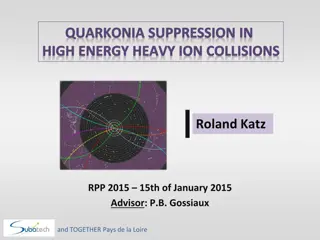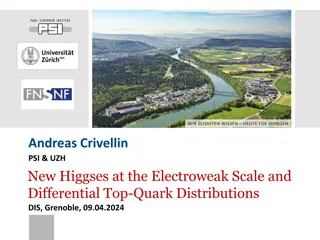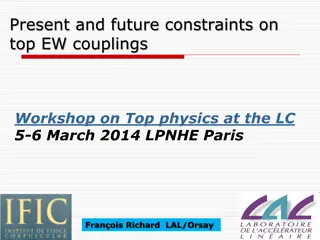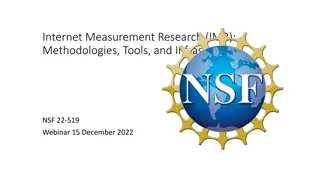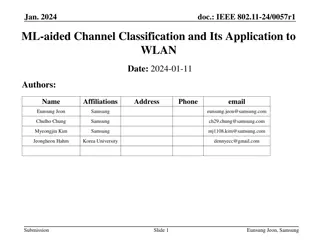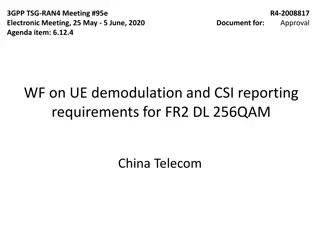Studies on Single Top Quark t-Channel Measurement with ATLAS Experiment
The research focuses on single top quark production to test the V-A structure of the Wtb coupling and measure |Vtb|^2. It is sensitive to new physics beyond the standard model and serves as a background for physics searches. The t-channel production is highlighted as the most promising channel for data at the LHC. Event topologies, event selection criteria, and analysis strategies using neural networks are discussed in detail for the study.
Download Presentation

Please find below an Image/Link to download the presentation.
The content on the website is provided AS IS for your information and personal use only. It may not be sold, licensed, or shared on other websites without obtaining consent from the author. Download presentation by click this link. If you encounter any issues during the download, it is possible that the publisher has removed the file from their server.
E N D
Presentation Transcript
Studies for the Single Top Quark t-channel measurement with the ATLAS experiment Ph. Sturm D. Hirschb hl, W. Wagner Bergische Universit t Wuppertal BND School Rathen 2009 21.09.2009 All work shown is work in progress and not necessarily a final result! 1
Single Top Quark Production Test of V-A structure of Wtb coupling Direct measurement of |Vtb|2 Test of the b-quark pdf Sensitive to new physics (4th generation, couplings, production modes, loop effects) Background for physics searches beyond the standard model heavy W , charged H, FCNC confirmation of the Tevatron discovery Ph. Sturm University of Wuppertal 2
Single Top Quark Production s-channel t-channel associated production s-channel t-channel Wt s 1.96 TeV 0.88 1.98 0.094 7 TeV 10 TeV 14 TeV 3.1 5.2 10.7 65 10.6 26.5 56 135.7 247 Exciting at the LHC @ 14 TeV: t-channel x-sec rises by factor ~120 W+jets x-sec rises only by factor ~10 High luminosity t-channel production is the most promising channel for first data (<1/fb) B.W. Harris et. al. Phys. Rev. D66,054024 T.Tait Phys. Rev D61,34001 Ph. Sturm 3 University of Wuppertal
Event Topology 1 forward light jet Top Decay: b-jet Leptonic W decay 1 high PT e or Missing transverse energy second b-jet if visible ZTOP: Sullivan, Z. Phys. Rev. D70 (2004) 114012 Ph. Sturm 4 University of Wuppertal
t-channel Event Selection Trigger e15_medium / mu15 Lepton selection (electron / muon): pT > 20 GeV/c | |< 2.5, electron not in crack region etcone20 < 6 GeV Jets Cone4H1Tower pT > 30 GeV/c | |< 5 b-tagging JetProb eb= 45%, rej. = 93 Overlap removal 1. select electrons 2. remove overlapping jets R < 0.2 3. remove muons overlapping with jets R < 0.3 Exactly one lepton 2 or 3 jets 1 b-tagged jet ET,miss > 20 GeV Ph. Sturm 5 University of Wuppertal
Analysis Strategy After b-tagging Before b-tagging (pretag) Validation of NN techniques Extraction of t-channel cross section using neural networks Normalization of tt and W+jets background using neural networks Ph. Sturm 6 University of Wuppertal
Neuronal Network Techniques Feed forward NN (15 hidden nodes) with variable preprocessing (NeuroBayes) Trained with events with 3 jets, no b-tag information Training was done only with W+jets and tt (50% / 50%) with 10 input variables Ph. Sturm 7 University of Wuppertal
Determination of tt and W+Jet fractions Process W + jets 68% Z + jets, diboson tt 5% 24% Wt/t-channel 3% Fit output to (pseudo)-data to determine fraction of tt and W+jet events. Fraction of Wt & t-channel fixed to prediction, Z + jets using Gaussian constrain of 20%. Ph. Sturm 8 University of Wuppertal
Sensitivity and Systematic Uncertainty on the Background Estimation The sensitivity of the fit is determined by pseudoexperiments the RMS of the distribution gives the statistical uncertainty Systematic Uncertainties affect the shape of the NN output distribution and the rate of the Number of expected events Important Systematic Uncertainties are: Jet Energy Scale PDF Uncertainty ISR/FSR Ph. Sturm 9 University of Wuppertal
Validation of the NN techniques For this exercise we use a NN trained with events with 2 jets and at least 1 btg Validation of input variables and correlations Events with 2 jet 0 tag Each lepton type separately For this exercise we used 10 variables (j1,j2) pT(light jet) M(j1,j2) SV1Weight ET,miss Polarization angle Helicity angle (lep) pT (lnj1) Choose well modeled ones Train network Validation of NN output Events with 2 jet 0 tag Slice & Dice 2 jet 0 tag Output itself Ph. Sturm 10 University of Wuppertal
Conclusion & Outlook Aim for the first LHC data: Develop data driven techniques to measure the W+Jets and tt background form the sidebands Explore NN techniques for the analysis develop methods to validate the MVA methods with data Include all various sources of systematic uncertainties into the analysis With enough integrated luminosity measurement of the single-top t-channel cross section Probably with the 2010 data only the determination of an upper limit possible Ph. Sturm 11 University of Wuppertal


